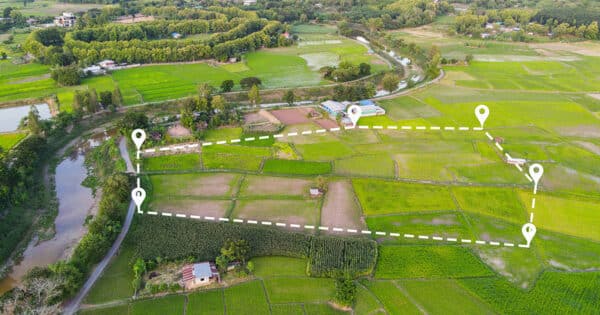In this article, I will be discussing what are, in my opinion, some of the most useful and interesting occupiers liability act 1957 and occupier liability act cases in recent years.
Firstly, let’s take a quick look at the relevant legislation. The liability of an occupier is governed by the Occupiers’ Liability Act 1957 (OLA 1957) and the Occupiers’ Liability Act 1984.
What does section 2 of the Occupiers’ Liability Act 1957 (OLA 1957) entail?
Section 2 of The Occupiers’ Liability Act 1957 states that:
- An occupier of premises owes the same duty, the ‘common duty of care’, to all his visitors, except in so far as he is free to and does extend, restrict, modify or exclude his duty to any visitor or visitors by agreement or otherwise and that
- The common duty of care is a duty to take such care as in all the circumstances of the case is reasonable to see that the visitor will be reasonably safe in using the premises for the purposes for which he is invited or permitted by the occupier to be there. The Occupiers’ Liability Act governs an occupier’s liability to trespassers. Section 1 (3) states:
An occupier of premises owes a duty to another (not being his visitor) in respect of any such risk [arising from the state of the premises or to things done or omitted to be done on them].. if:
- he is aware of the danger or has reasonable grounds to believe that it exists;
- he knows or has reasonable grounds to believe that the other is in the vicinity of the danger concerned or that he may come into the vicinity of the danger (in either case, whether the other has lawful authority for being in that vicinity or not); and
- the risk is one against which, in all the circumstances of the case, he may reasonably be expected to offer the other some protection.
The duty is to take such care as is reasonable in all the circumstances of the case to see that the ‘trespasser’ does not suffer injury on the premises by reason of the danger concerned.
Case analysis: Tomlinson v Congleton BC
In Tomlinson v Congleton BC [2004] 1 AC 46 (Tomlinson v Congleton), the claimant had dived into a lake in a disused quarry, when visiting a local country park on a hot summer’s day.
The water was shallow and he hit his head, fracturing his vertebrae and severing his spinal cord, leaving him as a tetraplegic.
Swimming in the lake was prohibited and there were prominent signs stating ‘Dangerous water. No swimming’.
The claimant alleged that the accident had been caused by breach of a duty of care that the defendant owed him as a trespasser under the Occupiers’ Liability Act 1984 (he had conceded that, once he had ignored the warning signs against swimming, he was no longer using the premises for the purposes for which he was invited or permitted by the occupier to be there, and at that point effectively became a trespasser).
The House of Lords held that the defendant was not liable. They found that the accident had not arisen from any danger due to the state of the premises or to things done or omitted to be done on them (under the 1984 Act), but from the claimant’s own misjudgement in attempting to dive in shallow water.
There was nothing that made the lake any more dangerous than any other ordinary stretch of open water in England. The claimant ‘was a person of full capacity who voluntarily took part in an activity that had inherent risk. Likewise, a person who goes mountaineering incurs the risk that he might stumble or misjudge where to put his weight. In neither case can the risk be attributed to the state of the premises.’ There was no risk of a kind that gave rise to a duty under the 1957 or 1984 Acts.
For the sake of completeness, the court considered what the position would have been if there had been a risk that was attributable to the state of the premises, and if the defendant had been a lawful visitor to whom a duty was owed under the Occupiers’ Liability Act 1957.
The court said that there was a balance to be made, that should consider not only the likelihood that someone might be injured and the seriousness of the injury that might occur, but also the financial cost of taking preventative measures and the social value of the activities that would have to be banned in order to eliminate an identified risk.
The court concluded that ‘it will be extremely rare for an occupier of land to be under a duty to prevent people from taking risks which are inherent in the activities that they freely choose to undertake upon the land’. Even if swimming had not been prohibited and the defendant had therefore not been a ‘trespasser’, the council would not be expected to take any steps to prevent the defendant from diving or warning him about dangers that were perfectly obvious.
Case analysis: Geary v JD Weatherspoon
In Geary v JD Weatherspoon [2011] EWHC 1506 (QB), the claimant had been drinking with friends at a Weatherspoons pub in Newcastle. The pub had a large staircase with sweeping bannisters on either side. The claimant climbed onto the bannister in order to slide down it, but fell backwards onto the marble floor below, fracturing her spine.
It was known that members of the public often tried to slide down the bannisters and some had sustained injury. The court stated that, under both the 1957 and 1984 Acts, ‘there is no liability on the part of the occupier for risks willingly accepted by the visitor or trespasser’. The risk was obvious. Again, the court followed the Tomlinson case. There was nothing inherently unsafe about the premises. The danger was created by the claimant’s decision to slide.
Case analysis: Edwards v London Borough of Sutton
Another important case is Edwards v London Borough of Sutton [2016] EWCA Civ 1005. Here, the claimant was pushing his bike over a bridge with low parapets in a park. He lost his balance and fell, together with his bicycle, onto the rocks below, sustaining severe injury.
The claimant alleged that the parapets were dangerous and that the occupier (the local authority) should have installed protective barriers or warned the claimant of the danger.
The Court of Appeal said that, unlike natural features such as lakes, cliffs or steep slopes, which could hardly be described as part of the ‘state of the premises’, a bridge with very low sides might, strictly speaking, present a danger arising from ‘the state of the premises’ such as to give rise to a common duty of care.
However, one needs to consider the social harm that might be caused by banning the public from accessing such bridges or by installing modern railings on historic stone structures.
Occupiers were not required to warn of obvious dangers. No such accident had happened on this bridge before. An addition such as railings ‘would have altered the character of the bridge significantly and to an extent out of proportion to a remote risk which had never materialised in its known history.’
Swimming in the lake was prohibited and there were prominent signs stating ‘Dangerous water. No swimming’
Although the defendant had not carried out a risk assessment, this would not have produced anything other than a statement of the obvious, and would not have led to any steps being taken that would have reduced the risk of the accident occurring.
Case analysis: English Heritage v Taylor
In English Heritage v Taylor [2016] EWCA Civ 448, the claimant suffered a severe head injury as a result of a fall when visiting Carisbrooke Castle on the Isle of Wight.
At one corner of the site, there was an elevated platform. Below the platform was a grass pathway, and a steep slope led from the platform down to the grass pathway.
There was an ‘informal path’ that led down the slope from the platform to the grass pathway. It would have been well known to staff that customers frequently used the ‘informal path’; it was a well worn track.
Beyond the grass pathway (on the opposite side to the platform and slope), the ground sloped slightly upwards before dropping down sharply into a dry moat. It appears that the claimant, having been on the platform, walked down the informal path towards the grass pathway, where he lost his footing and fell into moat.
The presence of the moat was not obvious to someone taking the route that the claimant had taken. There was no sign warning of the danger.
There was no requirement to warn of obvious risks, but this risk was not obvious. The court found that the defendant was in breach of its duty under the OLA 1957, but also found that contributory negligence of 50% attached to the claimant.
The court re-iterated the point that it is required to consider all the circumstances. These will include how obvious the danger is and, in an appropriate case, aesthetic matters.
It emphasised that this decision should not be interpreted as requiring occupiers like English Heritage to place unsightly warning signs in prominent positions all over sensitive historic sites. They are required to do no more than take reasonable steps.
Case analysis: Cook v Swansea City Council
The case of Cook v Swansea City Council [2017] EWCA Civ 2142 concerned a claimant who had slipped on ice in one of the defendant’s unmanned car parks.
In winter, the defendant did not grit unmanned car parks, unless it received a specific report from the public about a dangerous area.
The water was shallow and he hit his head, fracturing his vertebrae and severing his spinal cord, leaving him as a tetraplegic
The court followed the approach of the House of Lords in Tomlinson v Congleton. The court commented that: ‘The risk of ice in cold weather is an obvious danger. People out and about in cold weather can reasonably be expected to watch out for ice and to take care’.
The court again carried out a balancing exercise, balancing the obviousness of the risk, with the fact that an injury due to slipping on ice might be either minor or severe, the fact that the cost of regularly gritting all such car parks would be disproportionate to the risk, and the concern that, if there was a requirement to grit all unmanned car parks whenever there is a report of icy conditions, this might lead to the closure of car parks at such times, which would cause significant inconvenience to members of the public. In the circumstances, the Court of Appeal held that there had been no breach of duty by the defendant.
Further cases
In Lewis v London Borough of Wandsworth [2020] EWHC 3205 (QB), the claimant had been walking on a path that ran adjacent to a cricket pitch in Battersea Park, South London, when she was hit in the eye by a cricket ball, sustaining serious injury.
The defendant had furnished evidence that there were no previous records of such accidents in this park or elsewhere in the borough. The court held that: ‘In the circumstances… allowing pedestrians to walk along the path when a cricket match was taking place was reasonably safe, the prospects of an accident (albeit it nasty if it occurred) being remote.’
It found that displaying a sign, warning of the cricket match in progress would not have made a difference. It was perfectly obvious that the match was taking place.
See also the case of The White Lion Hotel v Deborah Jayne James [2021] EWCA Civ 31. The claimant had attended a wedding, after which he returned, mildly drunk, to his room at the defendant’s hotel. In the early hours of the morning, he fell to his death from the sash window of his room on the second floor of the hotel.
The lower part of the sash window could be opened but, if it was opened, it would not remain in the open position, but would fall under gravity. The window was low on the bedroom wall – the height of the window sill was 460 mm, whereas the modern standard is that the height should be no less than 800mm.
A single bed was positioned directly next to the window. No risk assessment had been made of the window.
Without any witnesses, it could not be certain exactly what had happened. But the court found that the claimant was probably sitting on the window sill (keeping the lower part of the window open with his body), before he lost his balance and fell.
He may have been smoking, or he may just have been getting some fresh air on what was a very hot summer’s night.
A risk assessment, properly carried out, would have identified the risk and should have led to measures taken to prevent the risk.
The cost of measures to address the risk (installing a window restrictor to prevent the lower half of the window from being opened) would be very low (about £8). There was no significant social value in guests being able to open the lower part of the sash window, in view of the fact that it would still have been possible fully to open the top part of the window.
The defendant had submitted that a person of full age and capacity who chooses to run an obvious risk cannot found an action against the occupier on the basis that the latter has permitted him to do so, and alleged that this was confirmed by the ratio of Tomlinson, Edwards and Geary.
However, the court in The White Lion Hotel case rejected the suggestion that the obviousness of risk alone was an absolute defence. In Tomlinson and the other cases cited, the obviousness of the danger was one element in a balancing exercise that also included the social cost and financial cost of precautions.
The Court of Appeal concluded that the defendant had breached its duty under the Occupiers’ Liability Act 1957. Contributory negligence of 60% attached to the claimant.
The court went on to comment that ‘there is a material difference between a visitor to a park, even a pub, and a guest in a hotel.
‘During the time the guest is in the hotel room it is “home from home”. The guest in the room may be tired, off-guard, relaxing and may well have had more than a little to drink.
“Despite notices to the contrary, he may be tempted to smoke out of the window and in hot weather the guest will want fresh air… These are normal activities’.
Although it is not particularly recent, one final, interesting case worth mentioning is McGeown v Northern Ireland Housing Executive HL 24 June 1994.
Here, the court held (affirming the rule in Gautret v Egerton [1867]) that people exercising a public right of way are not visitors under the Occupiers Liability Act 1957. The court said: ‘Persons using rights of way do so not with the permission of the owner of the solum [soil] but in the exercise of a right’. (The Occupiers Act 1984 also specifically excludes liability for people exercising a right of way).
Therefore, if a person suffers, for example, an accident on a path through a farmer’s field where there is a right of way, there is unlikely to be a claim under either Occupiers’ Liability Act.
The above cases show that the courts will usually carry out a balancing exercise, weighing various factors such as the obviousness of the risk, the likelihood that any risk may materialise, the severity of the injury if it does, the cost of measures to reduce the risk, and the social harm that any measures may cause.
If a public right of way exists over the premises, a claim under the Occupiers’ Liability Acts is unlikely to succeed.
Contact Matthew Tuff
For more advice on occupiers’ liability act 1957, OLA 1957, and major trauma cases, please contact Matthew Tuff.







